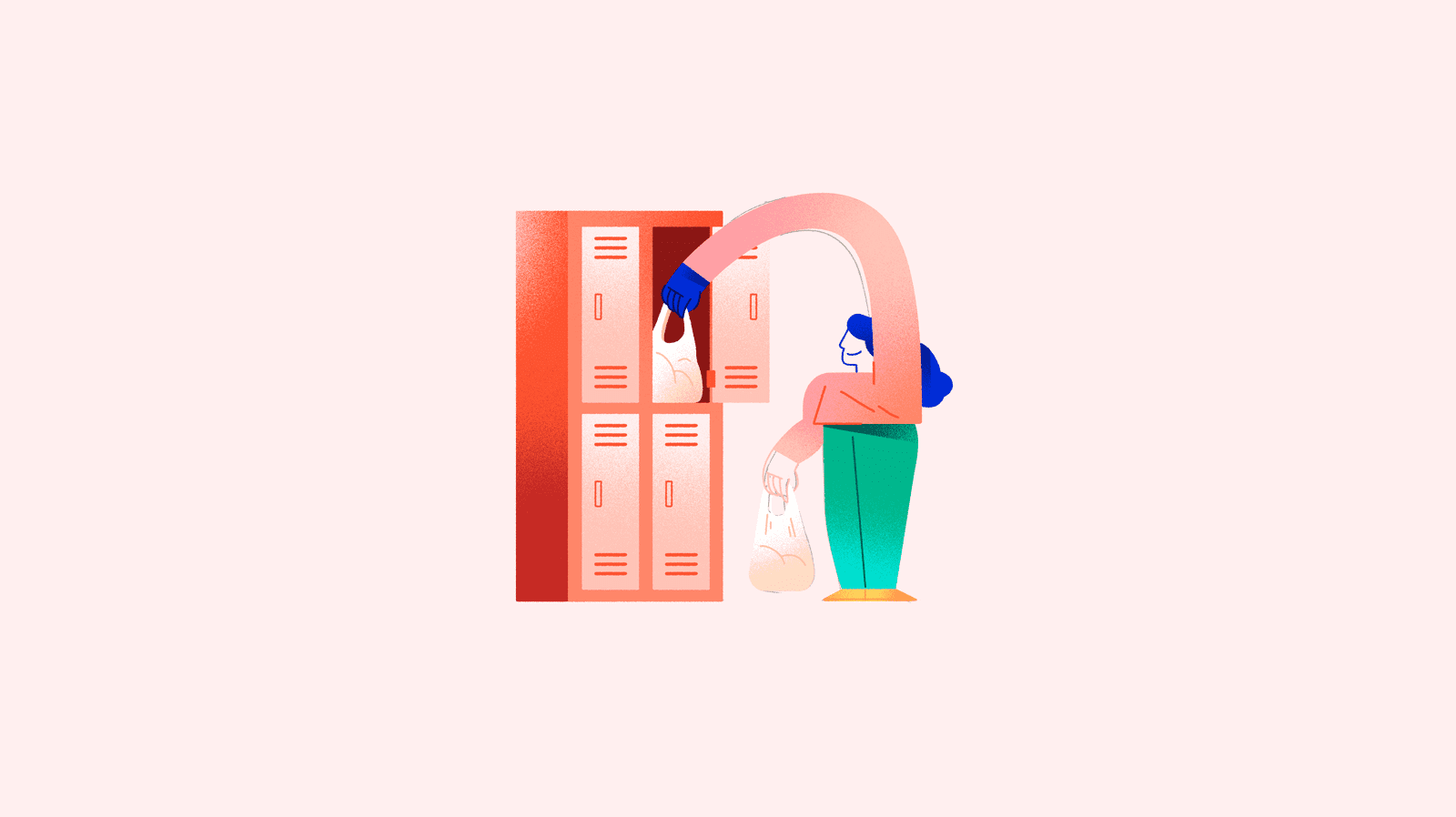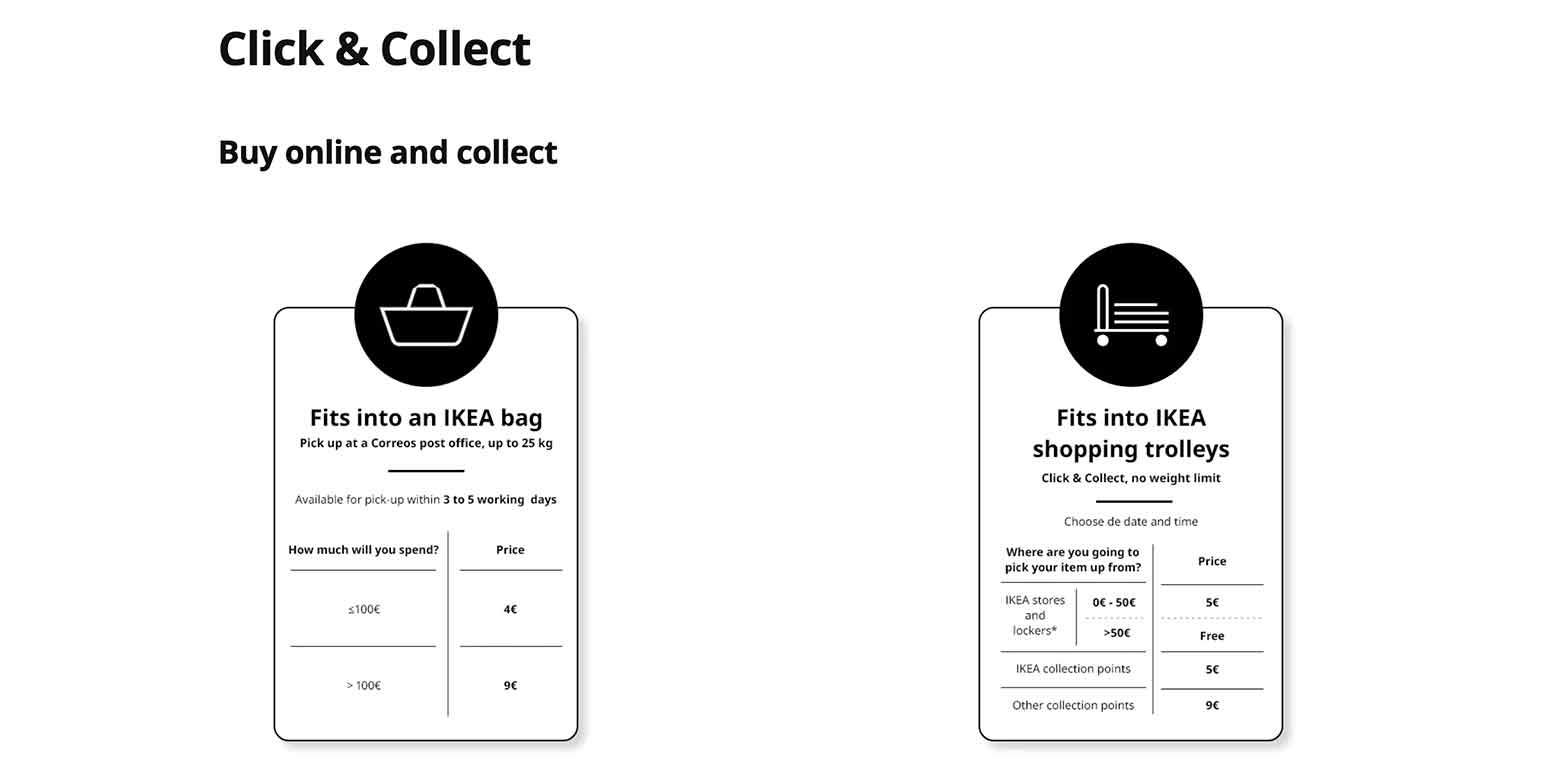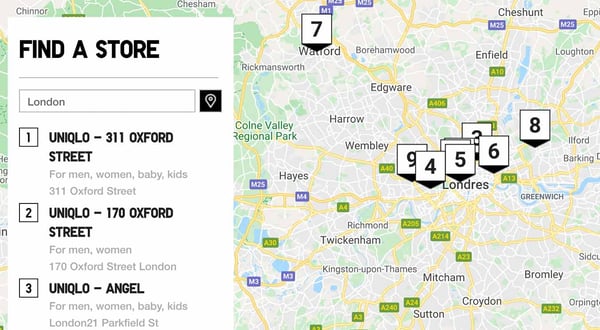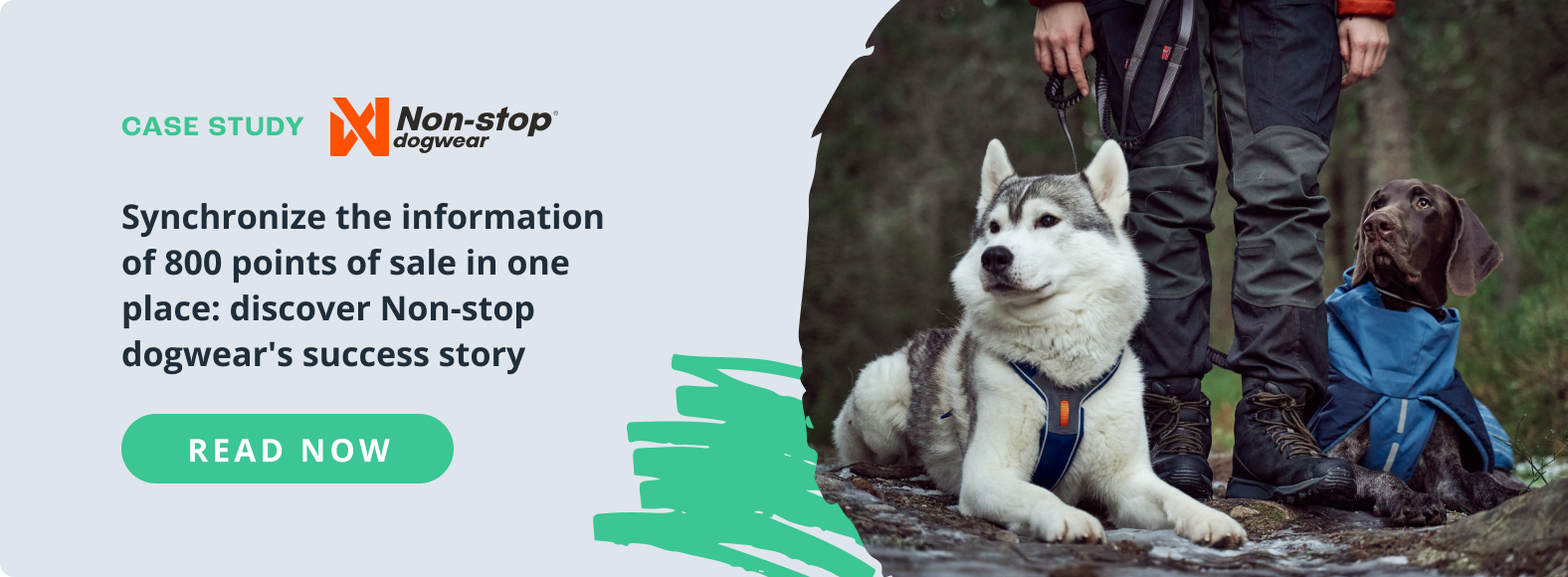
What is click-and-collect?
The click-and-collect service consists of making an online purchase and picking it up at a physical store or agreed pick-up point. It can be free of charge or involve an extra fee.
Another related modality that has become fashionable in the last year is curbside pickup, i.e., online purchase and delivery of the purchase at the box office, the store's parking lot or on the buyer's residential street.
Offering in-store returns or curbside pickup is also a common addition to this mode, which is very attractive to reluctant shoppers.
The popularity of click-and-collect in recent months is due to the fact that it avoids physical contact with couriers and is often a free or cheaper option compared to the home delivery charges common in most ecommerce.
While until last year offering click-and-collect was a secondary option for most online stores, today it has become a must-have. According to Adobe Analytics, in April 2020 the use of click-and-collect grew by 208%, and in countries such as the UK click & collect orders are expected to double by 2025.
How click-and-collect works
Depending on the type of click-and-collect offered by the online retailer, it can involve different logistical efforts for the retailer:
- Picking up the purchase at a physical store of the brand or retailer: This is the easiest option for the seller, as he simply has to select the product(s) at the store closest to the buyer with stock, or send it to the chosen store from his usual warehouse.
- Picking up the purchase at a collection point: This implies that the store must have agreements with other stores outside its network or postal and courier services to act as a collection point for the order.
- Pickup of the purchase at a locker: As with the first option, in this modality the seller obtains the products from his store or warehouse, places the purchase in a locker and transmits the code to the buyer to unlock it.
- Picking up the purchase at a parking lot or curbside: In these cases, one of the store's employees or delivery people must bring the purchase to the buyer's car at the agreed time, or go to the buyer's street, which involves a trip similar to home delivery.

Advantages of offering click-and-collect
- Higher customer satisfaction: It is a fast, convenient and cheaper service than home delivery. In addition, they often save queuing time in store as there is a dedicated click-and-collect counter.
- Faster order handling: It is easier to guarantee same-day or next-day delivery with click & collect than with other methods.
- Higher basket value: By saving on shipping costs, shoppers tend to spend more on click & collect purchases.
- Lower logistics costs: delivery modes are easier for the retailer to manage and require less courier and warehouse resources than home delivery.
- Reinforcement of the omnichannel strategy: Consumers value having all possible shipping options, and according to CNBC, 35% of those who pick up orders in store tend to take advantage of a quick visit and add more products to their purchase.

Disadvantages of click-and-collect service
- Omnichannel management: It is essential to have all the company's sales channels and management systems connected to ensure that accurate information is being shared with the buyer about stock, availability and pick-up times. A PIM (Product Information Management) system is the perfect platform to have the entire product catalog under control while being able to share that information with physical points of sale.
- Inventory monitoring: It is important to have the stock updated in real time to be able to coordinate the products ordered with the store or click-and-collect pick-up point. Having the right inventory management technology is crucial to automate this process without errors.
- More in-store resources: If you have a click-and-collect counter, you need to have employees to handle these orders or make deliveries to parking lots and lockers.
In short, the advantages of click-and-collect are many for customers, but marketers may see more disadvantages when implementing it in their sales strategy.
However, giving the customer the experience they are looking for is more valuable in the long run and in the face of fiercer competition in the last year.
Equip yourself with the technology that allows you to sync all your catalogue management resources, such as a PIM which you can try for free here.









